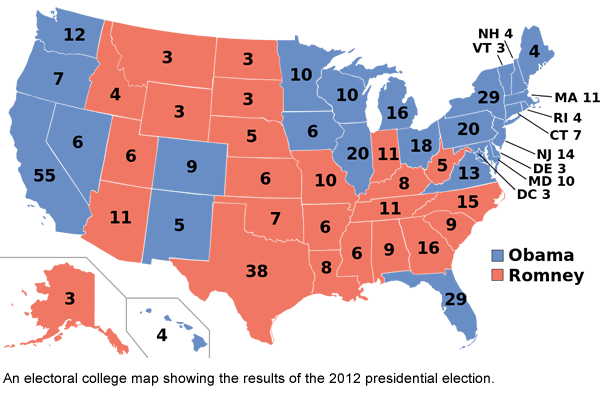Learn
History of Party Politics

When the Founding Fathers of the United States drafted the Constitution, they provided for a separation of powers, federalism, and an Electoral College to protect the new republic from political parties. Even George Washington warned against political parties in his Farewell Address in 1796, "Let me now take a more comprehensive view, and warn you in the most solemn manner against the baneful effects of the spirit of party generally."
Read "Farewell Address" to learn more about George Washington's warnings about political parties.
Despite the efforts of the founders, by 1800 the nation had developed two political parties organized on a national basis.
Read Political Parties.
Two-Party System
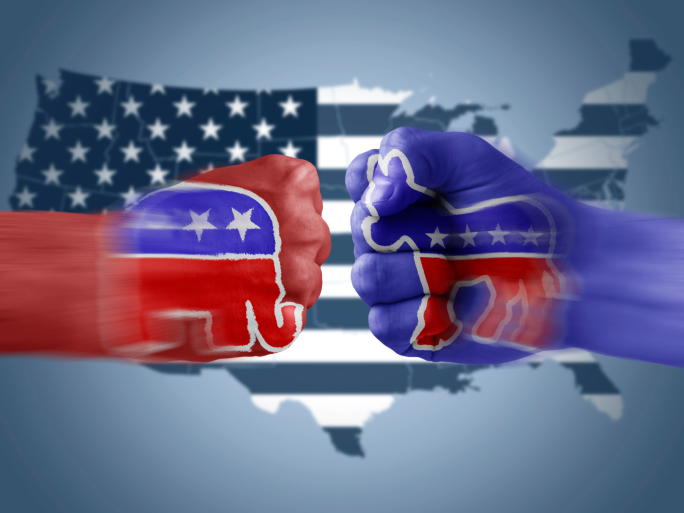
Today a two-party system dominates the American political process. The Democratic and Republican parties dominate the presidency, Congress, and the governorships and the state legislatures in most state governments. For example, a Democrat or a Republican has been President since 1852.
How Do I Join?
In some states, political parties hold a closed primary. In those states, a voter must become a formal member by registering as an official party member in order to vote in that party's primary. In an open primary state, parties have informal members. A voter simply supports a party with votes or donations to become a party member.
Party Membership in Alabama
Alabama holds an open primary which means a voter does not have to be a registered member of a political party to vote in the party's primary. Because Alabama is an open primary state, party membership is more informal.
Read "Political Parties" to review the information about the roles of political parties.
Party Leadership
Both the Democrats and Republicans have a national chairperson who leads their national committee. The national committee consists of members from state parties. The Republican National Committee, RNC, and the Democratic National Committee, DNC, have substantial staff members to organize party operations, raise funds, and campaign for their members.
At the state level, the parties have a central committee that consists of members from county committees. It is the responsibility of state party leaders to provide support to elect its local, state, and national candidates who are running for office.
Visit RNC to learn more about the current GOP or Republican leadership.
Visit Our Leaders to learn more about the current Democratic leadership.
National Conventions
The National Convention takes place during the summer before the primary election. Party activists gather to formally nominate their candidate and allow the candidate to announce his or her vice-presidential running mate.

Read US political conventions, explained: Why we still have them and what will happen in 2020.
Regional Strongholds
The Republican and Democratic parties both seek broad-based support and tend to draw voters from across economic classes and demographic groups. With the exception of African-American and Jewish voters who traditionally vote for the Democratic presidential candidate, both parties draw significant levels of support from virtually every major socioeconomic group in society.
On the other hand, each party has regional strongholds, or areas of the country they can count on to have a majority of support from the voters. For example, the southern states have been referred to as the "solid south" due to their dependable vote for one political party or the other. The Democratic Party dominated Alabama's political process for over 100 years. Following the Civil War, the Republican Party, which supported abolishing slavery, enjoyed little support in the South. Since the 1980's, the southern states have begun to support the Republican Party in increasingly larger numbers. Analyze the map below to determine which areas might be considered geographic strongholds.
Complete the exercise What is your Affiliation? to learn which party's ideals align most closely to yours.
Party Machines
During the Gilded Age in the late 1800s, many rapidly growing cities experienced a different type of party stronghold that was the result of a corrupt political structure known as political machines. Political machines provided the basic needs and services required to cope with major problems caused by the rapid growth and overcrowding in large cities. The machines often provided services and jobs to the people, especially vulnerable immigrants, in exchange for votes. This quid pro quo system resulted in a very powerful and corrupt political structure headed by a political boss.
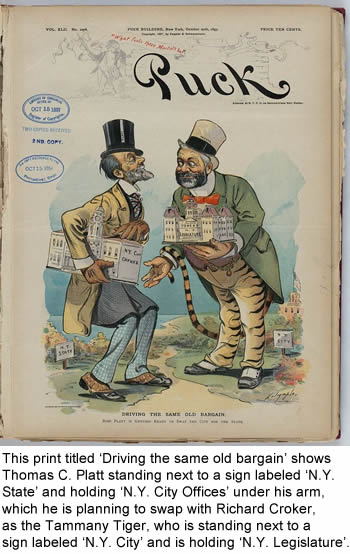
Read "Political Machines". As you read the presentation, complete 8.01 Party Politics. Be sure to save your work. You will use it later in the lesson!
The Democratic Party

The Democratic Party is the oldest party in the country's history. It traces its roots to the Democratic-Republican Party organized by Thomas Jefferson in 1792. By 1800, it was a well-established party. It reorganized under Andrew Jackson in 1828 and shortened its name to the Democratic Party in 1844.
Beginning in 1912, the Democratic Party has taken a more liberal view on social and fiscal issues than the Republican Party.
Supporters of the Democratic Party

The Democratic Party today is more likely to gain the votes of:
African-Americans
Urban dwellers
Residents of the Northeastern states or West Coast states
Blue-collar workers
Younger voters
Those with lower income levels
Those with a high school education or less
Explore "Democrats" to learn more about the platform of the Democratic Party.
Republican Party

The Republican Party, also known as the GOP or Grand Old Party, was founded by anti-slavery activists in 1854 and became a major party when it elected Abraham Lincoln President of the United States in 1860. Prior to the election of 1860, various other parties such as the Federalists, the National Republicans, and the Whigs had served as the other major party opposing the Democrats.
The Republican Party has taken a more conservative view on social and fiscal issues than the Democratic Party.
Supporters of the Republican Party
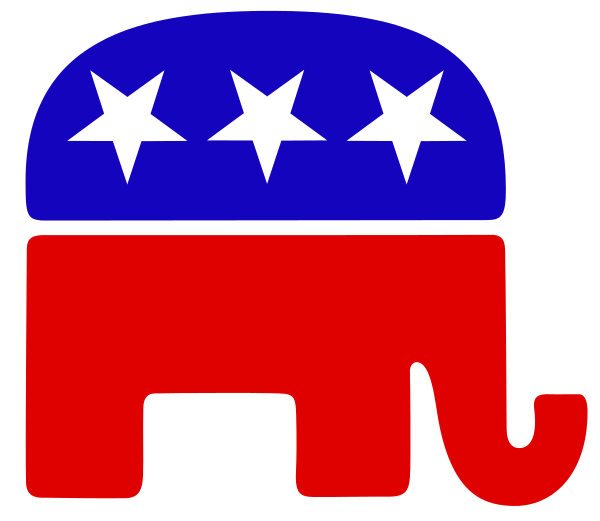
The Republic Party is more likely to gain the support of:
White voters
Rural dwellers
Residents of Southern or mid-Western states
White-collar workers
Middle-aged or older voters
Those with higher income levels
Those with college educations
Visit GOP to learn more about the Republican Party.
Independent Voters
The voice of "We the People" includes the majority and minority views. Although the two major political parties enjoy a majority of the voters, those voters who are in the minority have the freedom to vote independently or join third parties that represent the minority opinion.
Increasingly, Americans have become disillusioned with partisan politics and are choosing to remain independent of the two major political parties. Such voters may vote in a primary to select candidates if the state has an open primary. They are not able to vote in a primary if the state holds a closed primary. In the election process, candidates seek the votes of independent voters in addition to the votes of their party members. Such voters are referred to as swing voters because they will often fluctuate between supporting the candidates for each of the major parties.
Explore Evolution of Political Parties (5:36) to learn more about how political parties have changed in recent U.S. history.
Third Party Influence
Although the two major political parties dominate politics in our nation, third-party candidates play an important role in providing alternatives to disillusioned and independent voters. Third parties, such as the Green Party, Libertarian Party, and Socialist Party are not affiliated with the Democrats or Republicans. Even though they have poor representation in American politics, third parties can have a major impact on close elections by taking away votes from the major party candidates. For example, the Green Party candidate, Ralph Nader, impacted the outcome of the historically close presidential election in 2000.

Follow this link, to learn more about Third Parties Influence in the U.S.
Third Party Obstacles
Many obstacles exist in the American political system that deter the success of third parties. The Electoral College in itself deters support for third parties. The "winner-take-all" structure of our single-member system in the United States places third-party candidates at a disadvantage. The candidate who receives a plurality, or the most votes in a state, even if it is a narrow plurality, wins all of that state's electoral votes. Unlike proportional systems popular in many democracies, the single-member system permits only one party to win in any given district, thus creating incentives to form national parties with substantial financial resources that make it difficult for new parties to achieve enough financial and popular support to compete.
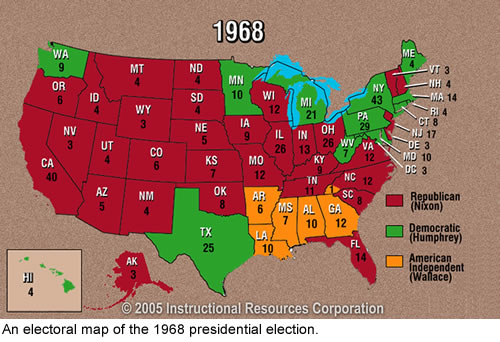
Read "Election of 1968" to learn about the impact of George Wallace as a third-party candidate in 1968.
America's distinctive nominating process is an additional structural barrier to third parties. Candidates for the two major parties are assured a place on the general election ballot after being nominated by their parties in the primaries. On the other hand, qualifying a new party candidate for the ballot can be a difficult and expensive undertaking, often requiring petitions with tens of thousands of signatures. In addition, a third-party candidate must have the ability to attract a sufficient "threshold" proportion of the vote in subsequent elections to remain on the ballot.
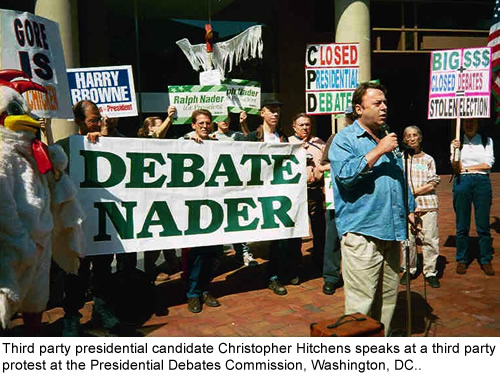
Explore Directory of U.S. Political Parties for a summary of all official political parties in the United States.
